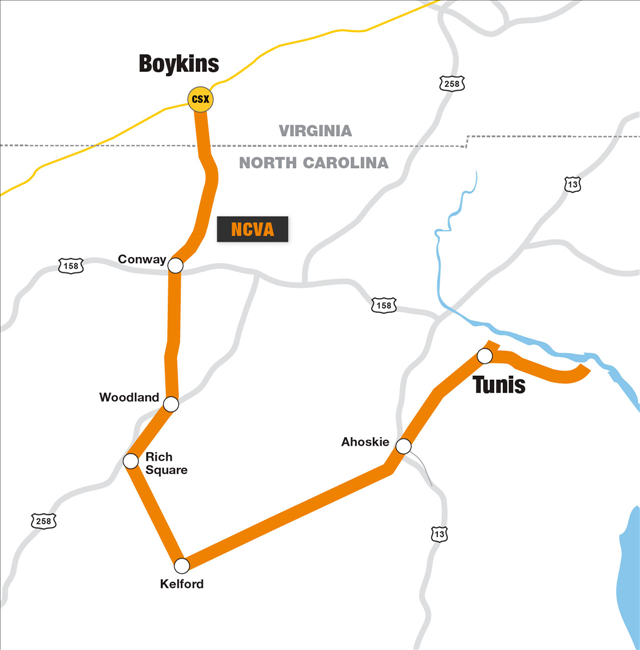
the North Carolina & Virginia Railroad is a shortline that depends upon traffic from the steel minimill in Tunis, NC
Source: Genesee & Wyoming, North Carolina & Virginia Railroad (NCVA)

the North Carolina & Virginia Railroad is a shortline that depends upon traffic from the steel minimill in Tunis, NC
Source: Genesee & Wyoming, North Carolina & Virginia Railroad (NCVA)
The North Carolina & Virginia Railroad links the CSX Railroad in Virginia with the Nucor Steel minimill about 50 miles away at Tunis, North Carolina. Two miles of track are located between Boykins, Virginia and the North Carolina state line.
That track was built by two separate railroads after the Civil War, as Virginia and North Carolina recovered economically and had products to ship to ports on the Elizabeth River.
The Seaboard and Roanoke Railroad expanded south by constructing the Roanoke and Tar River Railroad from Boykins to Lewiston, North Carolina in 1888. From the beginning, it operated as part of the Seaboard Air Line, but was not formally incorporated into that railroad until 1911.
The track in North Carolina between Kelford and Tunis (near Winton) was built separately by the Norfolk and Carolina Railroad in 1898, as part of its link to the Chesapeake Bay. The Norfolk and Carolina Railroad intersected the Roanoke and Tar River Railroad at Kelford, five miles north of Lewiston, North Carolina.
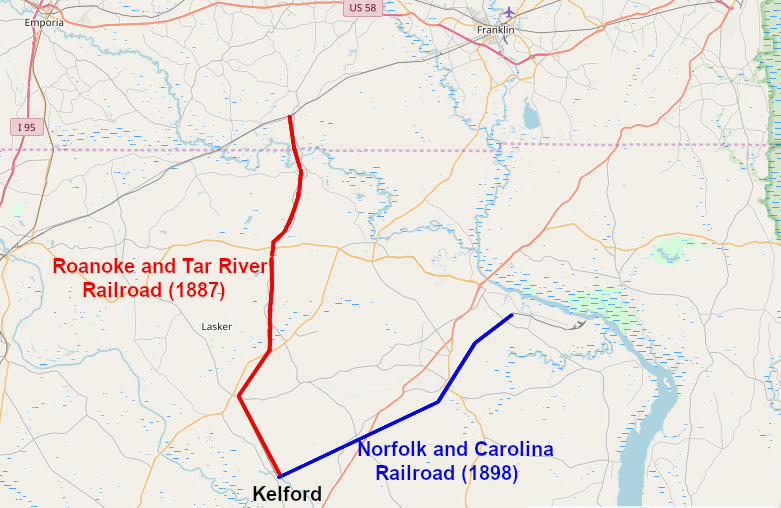
what is today the North Carolina & Virginia Railroad was built in two separate pieces originally
Source: ESRI, ArcGIS Online
The Norfolk and Carolina Railroad bridged the Chowan River at Tunis. The track ran to Suffolk, west of the wharves on the Elizabeth River, in order to avoid the expense and difficulty of crossing most of the Great Dismal Swamp.
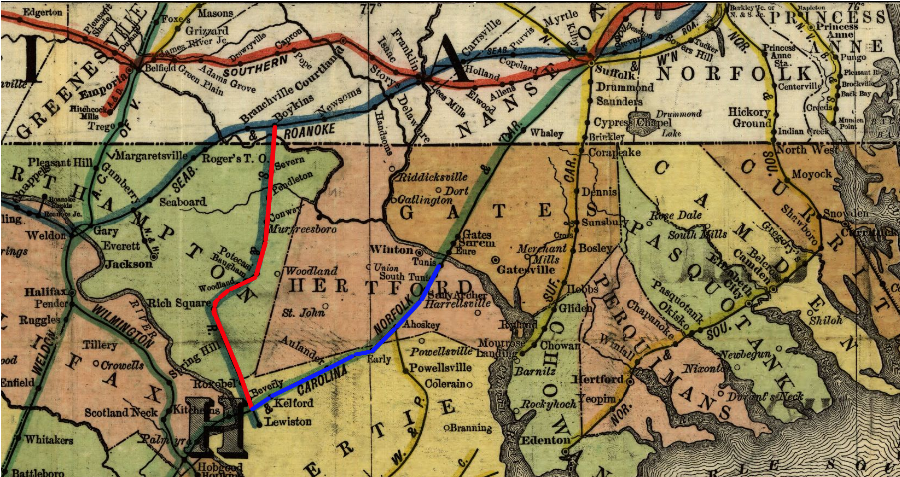
the current North Carolina & Virginia Railroad includes track from the Roanoke and Tar River Railroad (red) and Norfolk and Carolina Railroad (blue)
Source: Library of Congress, Railroad map of North Carolina, 1900, examined and authorized by the North Carolina corporation commission (H. C. Brown, 1900)
The Suffolk & Carolina Railway made a similar decision, when it built its track from Suffolk to Edenton. So did the "original" Norfolk Southern Railroad, which built track on the east side of the swamp to Norfolk. The railroads did not divert all the traffic from the Dismal Swamp Canal; boats still carried lumber products north to wharves on the Elizabeth River.
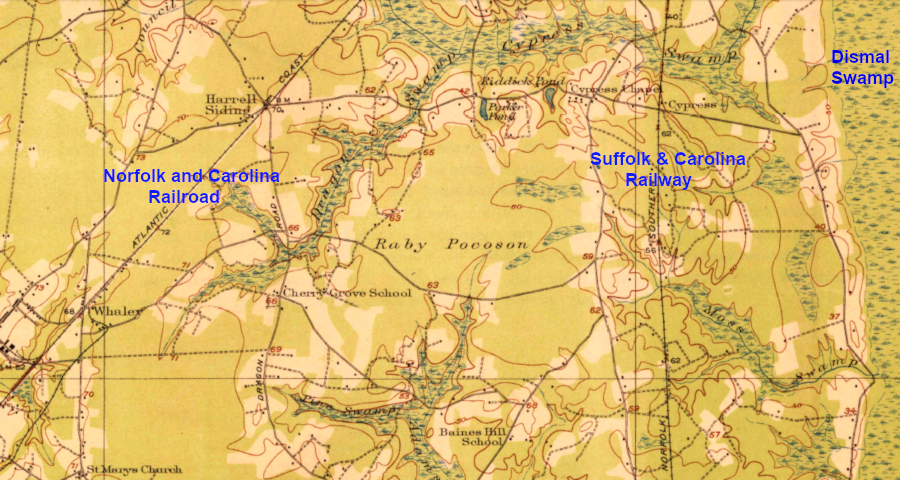
the Norfolk and Carolina Railroad built on the west side of the Dismal Swamp to Suffolk, while the original Norfolk Southern built on the east side to Norfolk
Source: US Geological Survey (USGS), 1:62,500-scale topographic quadrangle, Suffolk, VA (1919)
The Norfolk and Carolina Railroad soon became the Norfolk Branch of the Atlantic Coast Line, when that railroad was organized in 1890.
After the Atlantic Coast Line and the Seaboard Air Line merged in 1967 to create the Seaboard Coast Line, the original Portsmouth and Roanoke Railroad route from Tarboro to Suffolk became the main line. The stretch of the Norfolk and Carolina Railroad between the Chowan River at Tunis and Suffolk duplicated the main line, and to reduce costs that track was pulled up and the line was abandoned. The connection between Kelford northeast to the Chowan River was kept in operation.
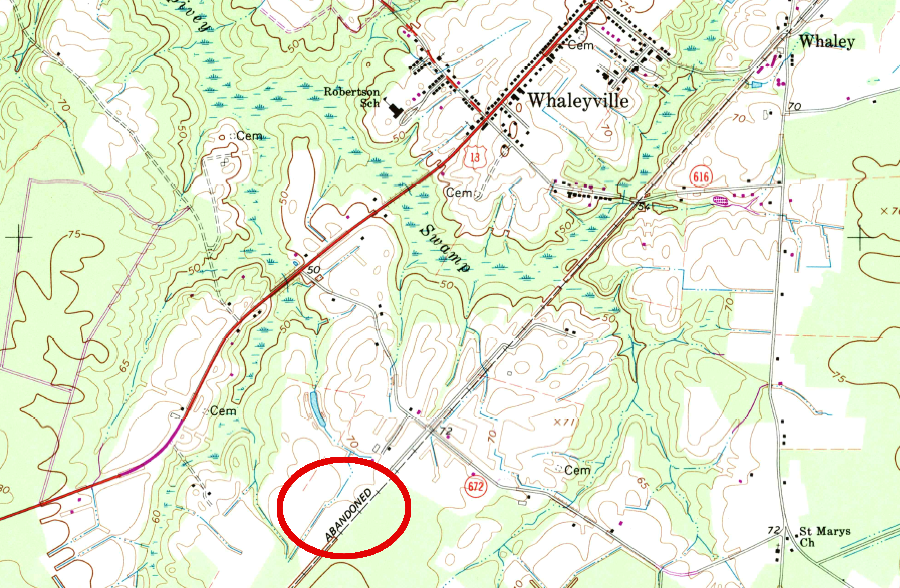
the track between the Chowan River and Suffolk, built in 1898, was abandoned after formation of the Seaboard Coast Line in 1967 made it duplicative of the main line from Tarboro, North Carolina
Source: US Geological Survey (USGS), 1:24,000-scale topographic quadrangle, Whaleyville, VA (1967)
The track going south from Boykins to Kelford and the separate track going northeast from Kelford to Tunis were both incorporated into the CSX Railroad, which consolidated the Seaboard Air Line and the Atlantic Coastline Railroad. CSX spun off the North Carolina & Virginia Railroad branch line to RailTex in 1987, and the five miles of track between Lewiston and Kelford were abandoned.1
The railroad conglomerate RailAmerica bought RailTex and the branch line in 2000. In 2012, RailAmerica was acquired by Genesee & Wyoming.
During all the corporate shifts, the stretch of track from Boykins to Tunis has stayed in active use. It now generates profits in both directions. North Carolina & Virginia Railroad trains haul metal scrap south to the NuCor minimill at Tunis, and take manufactured steel products north to an interchange with CSX at Boykins.2
An $11 million upgrade of the privately-owned track was started after getting $8 million in public funding from Federal and North Carolina state agencies in 2016. The upgrade helped maintain jobs at Nucor Steel, which shipped 60% of its product by rail.
Prior to improvements to the track and bridges within North Carolina, trains could not exceed 10mph. Afterwards, trains could speed along at 25mph.3
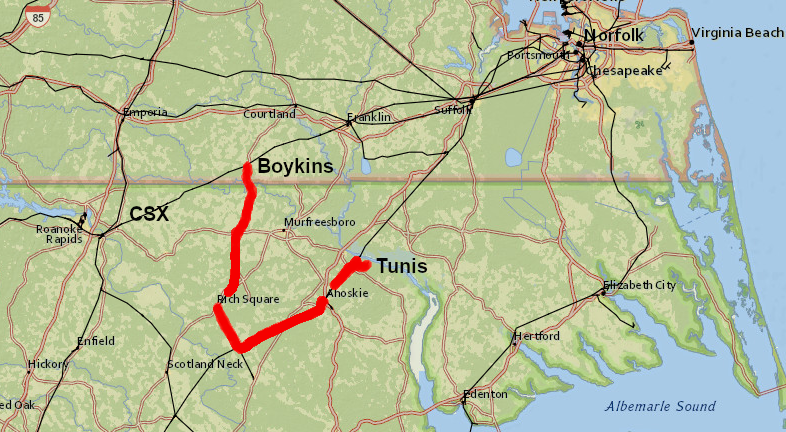
the North Carolina & Virginia Railroad links to the CSX Railroad at Boykins, Virginia
Source: ESRI, ArcGIS Online
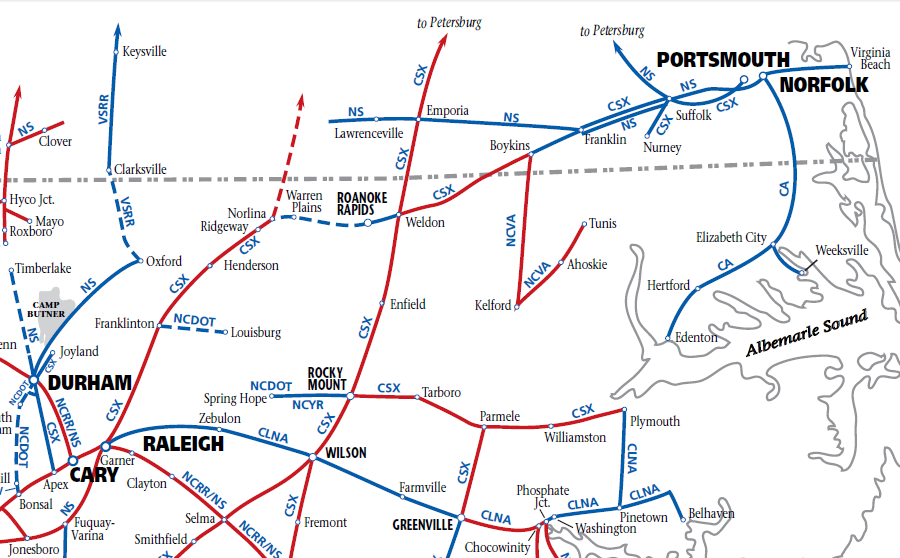
the only rail service in the Ahoskie region today is provided by the North Carolina & Virginia Railroad
Source: North Carolina Department of Transportation, North Carolina Railroad System